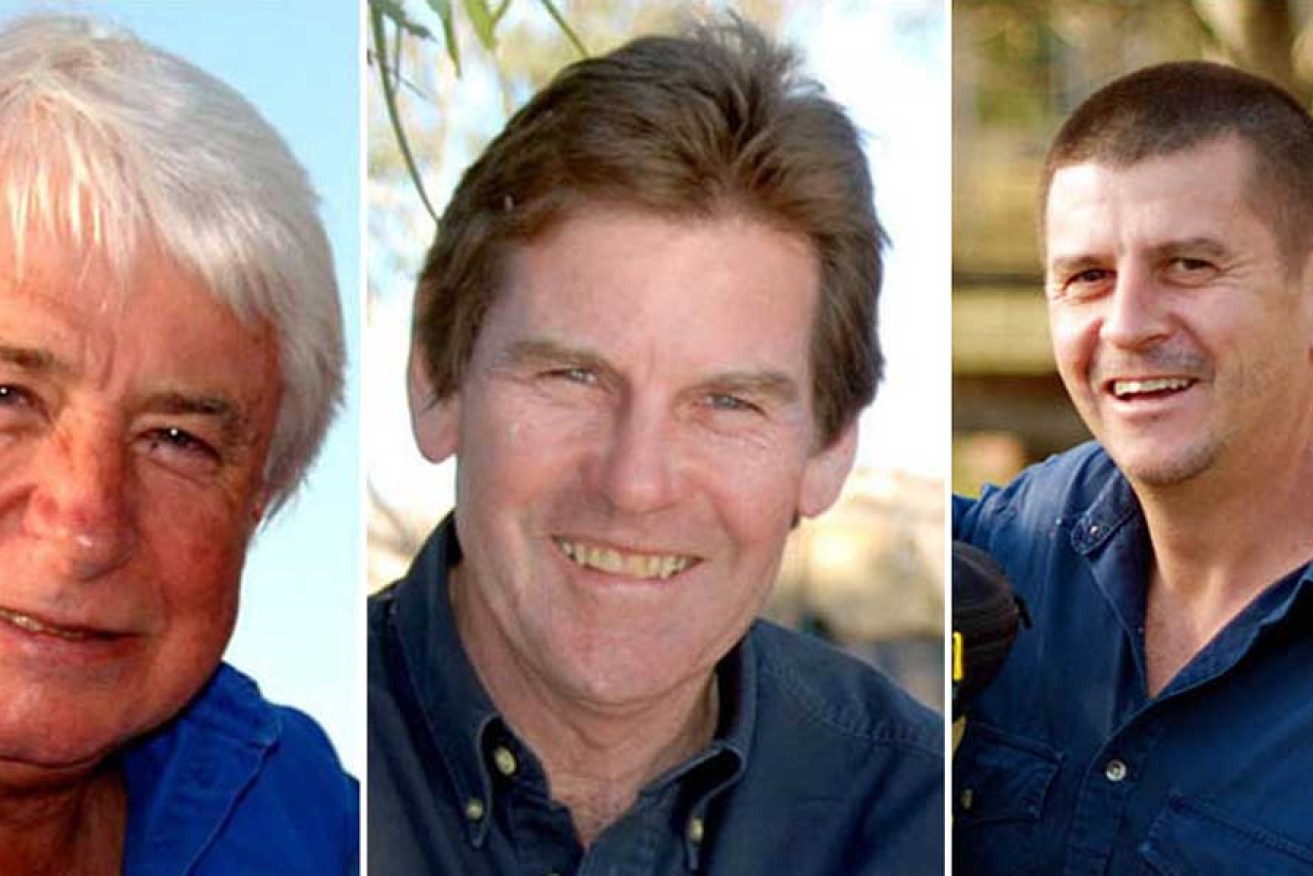The pilot of the ABC helicopter that crashed in the South Australian outback two years ago, killing all three on board, became “spatially disoriented” soon after takeoff on a dark night, the Australian Transport Safety Bureau (ATSB) has found.
Journalist Paul Lockyer, cameraman John Bean and their pilot Gary Ticehurst died in the August 2011 crash when their Aerospatiale Industries AS355 chopper went down in an area of the Cooper Creek, about 145km north of Marree.
“The ATSB found that the pilot probably selected an incorrect destination on one or both of the helicopter’s global positioning system (GPS) units prior to departure,” the report released on Thursday said.
“The ATSB concluded that, after initiating the right turn at 1500 feet, the pilot probably became spatially disoriented.
“Factors contributing to the disorientation included dark night conditions, high pilot workload associated with establishing the helicopter in cruise flight and probably attempting to correct the fly-to point in a GPS unit, the pilots limited recent night flying and instrument flying experience, and the helicopter not being equipped with an autopilot.”
The helicopter crashed 38 seconds after takeoff at 7pm on August 18, 2011.
The ATSB report said some of the risk controls for the conduct of night visual flight rules were more than required by regulation, but the operator did not effectively manage the risk associated with operations in dark night conditions.
The ATSB also said some of the existing regulatory requirements for night flying were inadequate.
It has advised pilots and operators to systematically assess the potential for the flight to encounter dark night conditions, with limited moonlight and other lighting.
“If there is a likelihood of dark night conditions, the flight should be conducted as an IFR (Instrument Flight Rules) operation, or conducted by a pilot who has an IFR-equivalent level of instrument flying proficiency and in an aircraft that is equipped to a standard similar to that required under the IFR.”
The ATSB has issued a recommendation to the Civil Aviation Safety Authority to prioritise a review of night flying procedures.
CASA will now require that helicopter air transport operations with passengers at night use either a helicopter fitted with an autopilot or a two-pilot crew.
Managing director Mark Scott has told staff the ABC will read, absorb and respond to the findings of the ATSB report with an overriding concern for staff welfare.
“The bureau and the Civil Aviation Safety Authority (CASA) have proposed new and clearer standards for helicopter flights in dark night conditions and proposed new requirements for pilot qualifications and the use of autopilots,” Scott said in an email on Thursday.
“The ABC will act on these recommendations by ensuring there is no night flying until the corporation updates its systems in response.”
Scott said with the release of the ATSB report, the thoughts of all at the ABC were once again with the families, friends and colleagues of those killed.
“While the ATSB Report is a necessary part of the follow-up process, it does serve as a tragic reminder of their painful loss in the desert sands near Lake Eyre,” he said.





